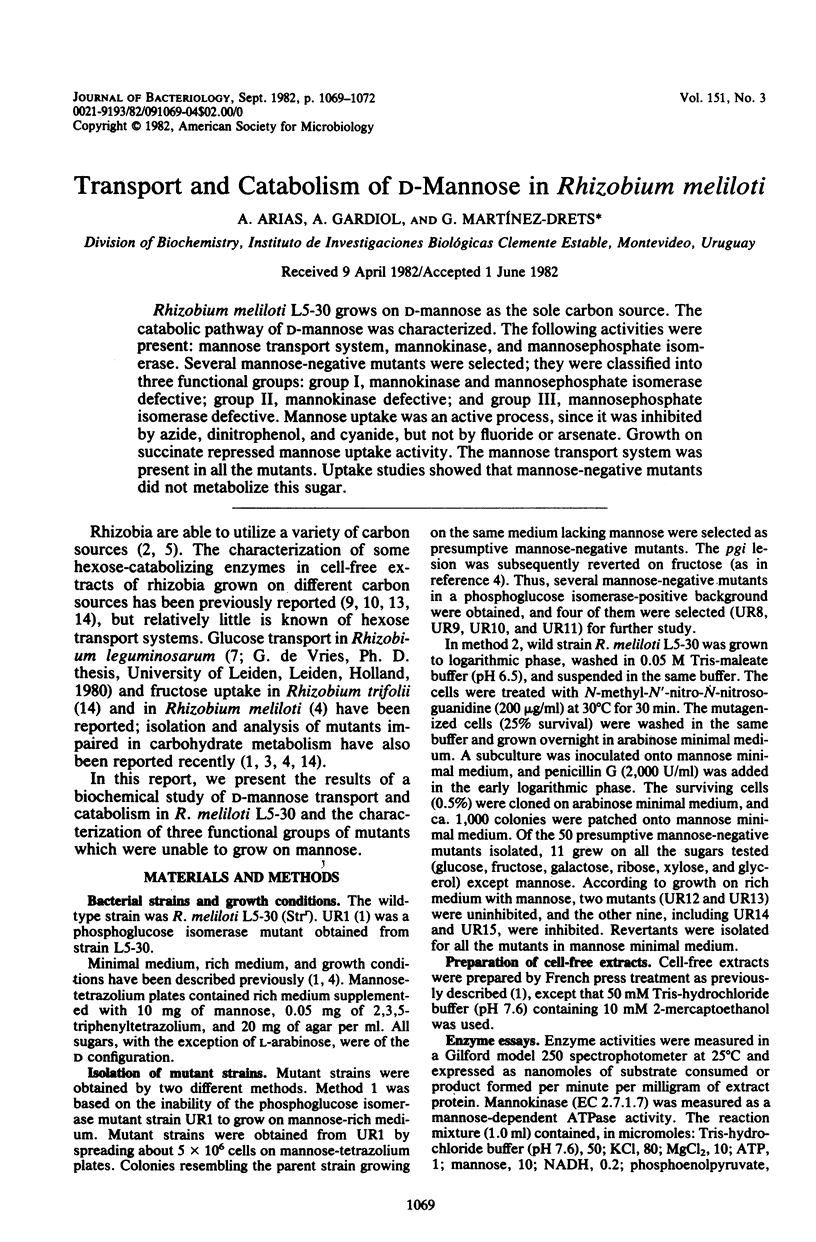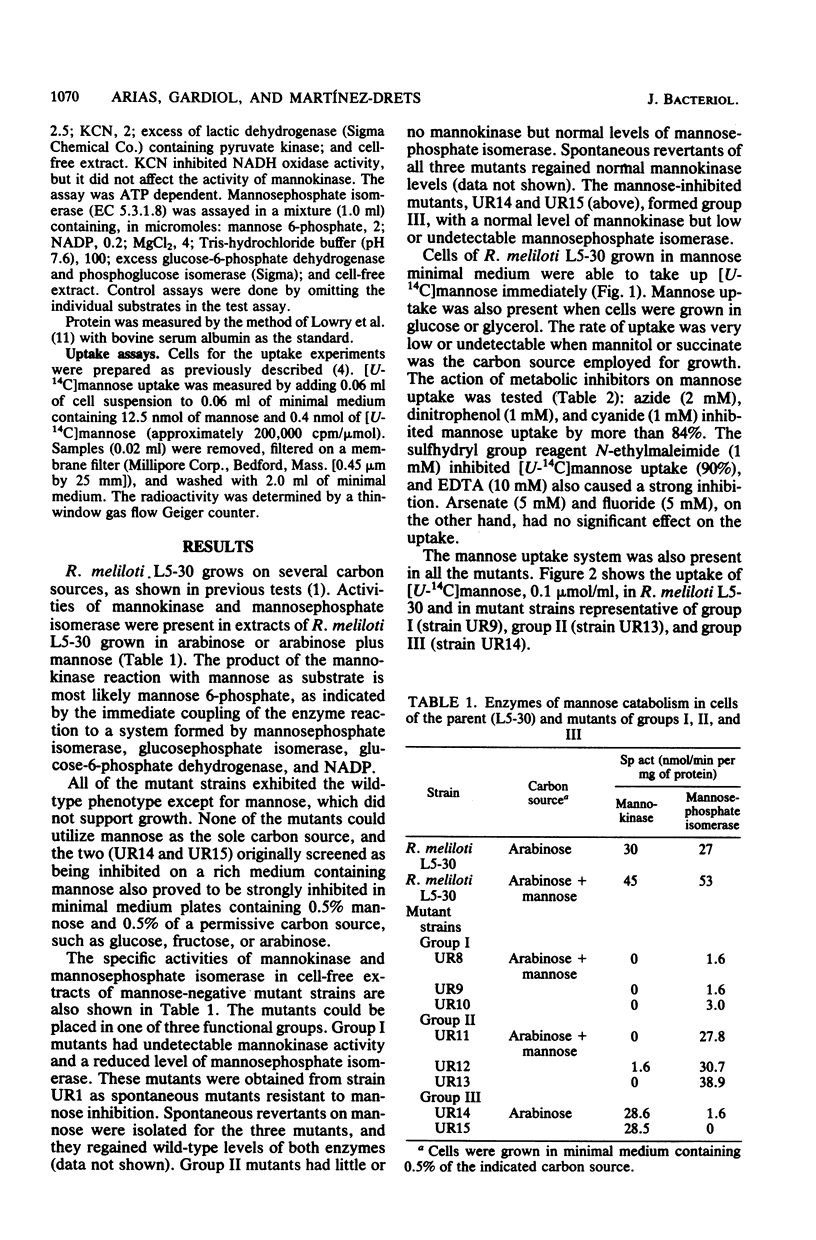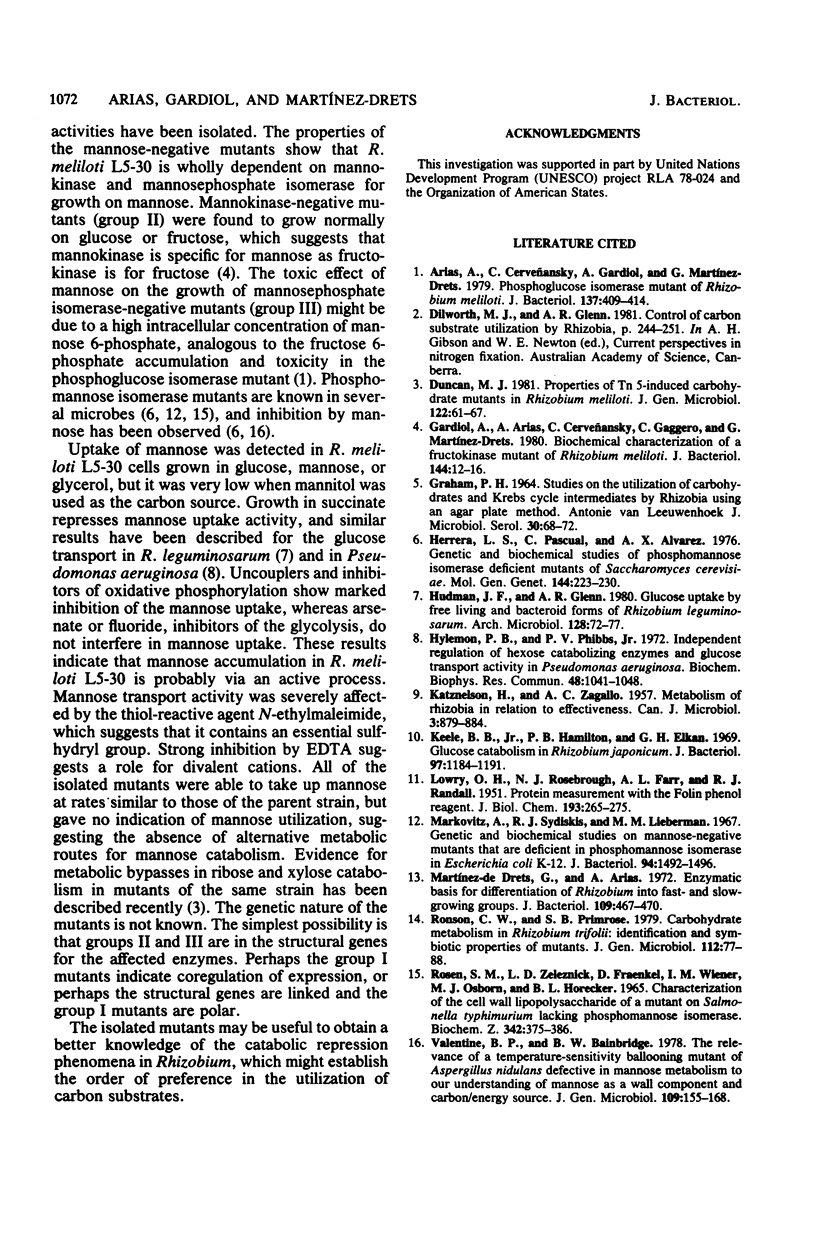Abstract
Rhizobium meliloti L5-30 grows on D-mannose as the sole carbon source. The catabolic pathway of D-mannose was characterized. The following activities were present: mannose transport system, mannokinase, and mannosephosphate isomerase. Several mannose-negative mutants were selected; they were classified into three functional groups: group I, mannokinase and mannosephosphate isomerase defective: group II, mannokinase defective; and group III, mannosephosphate isomerase defective. Mannose uptake was an active process, since it was inhibited by azide, dinitrophenol, and cyanide, but not by fluoride or arsenate. Growth on succinate repressed mannose uptake activity. The mannose transport system was present in all the mutants. Uptake studies showed that mannose-negative mutants did not metabolize this sugar.
Full text
PDF



Selected References
These references are in PubMed. This may not be the complete list of references from this article.
- Arias A., Cerveńansky C., Gardiol A., Martínez-Drets G. Phosphoglucose isomerase mutant of Rhizobium meliloti. J Bacteriol. 1979 Jan;137(1):409–414. doi: 10.1128/jb.137.1.409-414.1979. [DOI] [PMC free article] [PubMed] [Google Scholar]
- GRAHAM P. H. STUDIES ON THE UTILISATION OF CARBOHYDRATES AND KREBS CYCLE INTERMEDIATES BY RHIZOBIA, USING AN AGAR PLATE METHOD. Antonie Van Leeuwenhoek. 1964;30:68–72. doi: 10.1007/BF02046703. [DOI] [PubMed] [Google Scholar]
- Gardiol A., Arias A., Cerveñansky C., Gaggero C., Martínez-Drets G. Biochemical characterization of a fructokinase mutant of Rhizobium meliloti. J Bacteriol. 1980 Oct;144(1):12–16. doi: 10.1128/jb.144.1.12-16.1980. [DOI] [PMC free article] [PubMed] [Google Scholar]
- Herrera L. S., Pascual C., Alvarez X. Genetic and biochemical studies of phosphomannose isomerase deficient mutants of Saccharomyces cerevisiae. Mol Gen Genet. 1976 Mar 22;144(2):223–230. doi: 10.1007/BF02428113. [DOI] [PubMed] [Google Scholar]
- Hylemon P. B., Phibbs P. V., Jr Independent regulation of hexose catabolizing enzymes and glucose transport activity in Pseudomonas aeruginosa. Biochem Biophys Res Commun. 1972 Sep 5;48(5):1041–1048. doi: 10.1016/0006-291x(72)90813-3. [DOI] [PubMed] [Google Scholar]
- KATZNELSON H., ZAGALLO A. C. Metabolism of rhizobia in relation to effectiveness. Can J Microbiol. 1957 Oct;3(6):879–884. doi: 10.1139/m57-097. [DOI] [PubMed] [Google Scholar]
- Keele B. B., Jr, Hamilton P. B., Elkan G. H. Glucose catabolism in Rhizobium japonicum. J Bacteriol. 1969 Mar;97(3):1184–1191. doi: 10.1128/jb.97.3.1184-1191.1969. [DOI] [PMC free article] [PubMed] [Google Scholar]
- LOWRY O. H., ROSEBROUGH N. J., FARR A. L., RANDALL R. J. Protein measurement with the Folin phenol reagent. J Biol Chem. 1951 Nov;193(1):265–275. [PubMed] [Google Scholar]
- Markovitz A., Sydiskis R. J., Lieberman M. M. Genetic and biochemical studies on mannose-negative mutants that are deficient in phosphomannose isomerase in Escherichia coli K-12. J Bacteriol. 1967 Nov;94(5):1492–1496. doi: 10.1128/jb.94.5.1492-1496.1967. [DOI] [PMC free article] [PubMed] [Google Scholar]
- Martínez-De Drets G., Arias A. Enzymatic basis for differentiation of Rhizobium into fast- and slow-growing groups. J Bacteriol. 1972 Jan;109(1):467–470. doi: 10.1128/jb.109.1.467-470.1972. [DOI] [PMC free article] [PubMed] [Google Scholar]
- Rosen S. M., Zeleznick L. D., Fraenkel D., Wiener I. M., Osborn M. J., Horecker B. L. Characterization of the cell wall lipopolysaccharide of a mutant of Salmonella typhimurium lacking phosphomannose isomerase. Biochem Z. 1965 Aug 19;342(4):375–386. [PubMed] [Google Scholar]


